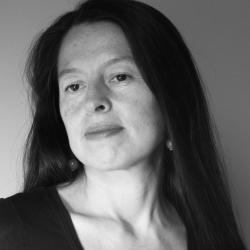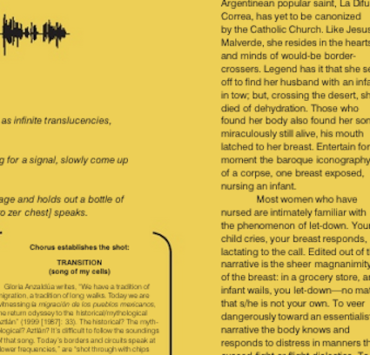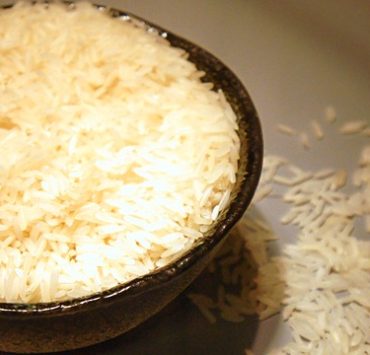
Luisa Rabbia is an Italian artist currently working and living in Brooklyn, New York. After living with her work deeply for a month I am occupied by its depth in imagining the interchange of internal and external landscapes, its multitudinous inversive qualities. Her work is conceptually beautiful especially in its often exilic social relevance.
MLV : Whether in writing or visual art, as creator or receiver, from this to that, from here to there is an act of translation, an imaginative exchange crossing into multiplicities of space-time. It seems that despite the range of materials you employ, the line, drawing the line allows for goings and returns while imprinting a certain timelessness. The penciled and painted “You Were Here, You Were There” offers simultaneous narratives and natural landscapes while beings contextualized with the evidence of one of our most vulnerable states: sleep. In very different ways, “Absence” and “People” imprint evidence of what always was and is. Can you relate how your relationship with drawing / the line takes you into what can be called the body of the migrant line (Bhanu Kapil)?
LR: I very much enjoy your visualization of a drawing line that migrates on a sheet of paper leaving traces behind. When we write or draw we leave signs, traces. We translate thoughts and feelings into words or images. Even though I have been drawing since I was little, it is only when I moved to N.Y. in 2000 that it became the main expression on my work, perhaps for the lack of an English language that did not allow me to communicate verbally. When I moved to NY I instinctively started drawing and seeing it as a way of writing with images instead of with words.
At the beginning I drew using a blue ballpoint pen which, while I was waiting tables to make my living, always had with me to take orders. Acting on the urge to write down a feeling or an idea, to mentally evade from the work I was doing, the blue pen did help me record moments on pieces of paper or paper napkins.
Drawing is a process that happens in a real time, allows you to think and record, second after second, the evolution of an idea, of a thought, of a feeling. Time itself becomes part of the work. As we all experience, time passes and things change, some come and others go, but often leaving marks which not only extend the past into the present but almost give a physicality to the absence of the ones that have gone away.
In “You Were Here. You Were There” and in my latest drawings “Sheets”, the subject of the drawing is my bed, actually, more specifically, the sheets on my bed. The idea of time was so important to me that in “Sheets” I drew with a silver point pen (which is a metal pen and you actually draw releasing silver on a ground prepared paper). This means that the silver will slowly oxide with the passing of time (it is almost imperceptible to the eyes, but it happens). I like this very much because it means that the surface is alive, keeps breathing and interacting.
MLV: “From the Within Out” elucidates the experience of sleep using the bodily figure, the images of suitcases and grass and pillows. I am particularly drawn to the hands of feet of the dormant bodies and how lines become membrane or root-like, interchanging human bodies and natural landscapes. Can you share your attraction to sleep in relation to movement? To the unseen?
LR: I am often fascinated by sleeping bodies because they are physically here but mentally somewhere else. Their stillness, especially when sleeping on the ground, makes me wonder if they are alive and still part of the life that is unfolding around them with a very different pace. I can’t help but wonder where they are, so detached from us. There is no way to communicate with someone sleeping and I do not mean only verbally because often we “feel” each other also without talking. But someone sleeping is only dealing with himself, with his past, present, or imagination, mixed together into his dreams.
The communication and connection between human beings is very dear for me. How we feel each other behind words, how my life is interconnected to yours, how our lives are consistently linked to the lives of things around us.
MLV There’s an intimacy in your work with the body, bodies of difference, all different bodies, the precarious line of difference that serves as a source of interactions, bodies which offer a sense of elsewhere (Trinh T. Minh-ha). “Under the Same Sky” and “Travels with Isabella” combine photographs of places (Turin, Morocco, Romania, and China) with your drawing, thereby recreating and reigniting the scenarios. “Travels with Isabella” began as a video, charged with what I refer to your signature blue life-force, among the superimposed drawings, which came later.
When face to face with the faces, the heads—could be African inspired, could be Asian inspired, drawn in what could be darker-skinned people or perhaps as photo negatives—in the series “Other,” one is also very much in the presence of the internal. Grief, alienation, hope, confidence, worry, among myriad emotions, become visceral. Each figure offers a multiplicity of experience. How did you arrive at the title, which could run the risk, instead, of alienating rather than creating the exchanges that the paintings evoke? Can you talk about how the powerful emotional ranges presented themselves and how you were transformed in their making?
LR: In our culture we identify the other as someone different from us. The title of this work aims to invite the viewer to approach the other as someone unique with his/her own identity but not classifiable with the color of the skin. The faces portrayed in this series are people from all over the world but the absence of a skin color and a background and clothes do not give us any specific reference about who they are. In addition, each face is drawn as if it would be seen through X-ray as an invitation to deal with the “inside” rather than with the way we look. As it is true that we can still recognize Western or Asian or African features, these drawings do not explicitly say anything about a skin color that too often has been used to classified people based on their race. Different features may show our cultural difference, our unique stories, but give us too little information to be able to categorize.
We deal with a lot of prejudices. Sometimes, for example, the dark blue in my work is seen as a black skin. But it is not black, it is blue. When I draw with blue pencil on white acrylic no one ever asks me if I am representing white people. But as soon as I draw with white pencil on blue acrylic this question comes up as an urge to classify.
The faces in “Other” come from people I saw in the New York subway, or from photographs I found on line. I felt inspired by any single one but at beginning I had no idea about how I would have drawn them. I just let myself go, “feeling” each one of them and hoping that something would come up, something deeper than a good portrait of their face. I am glad to hear that you have reacted so well to this work.
MLV: From the more interpretive, “A Fortunate Encounter” and “Untitled, 2008,” to the more explicit “Carrying the Future” sequence, you capture the micro and macro of life—what gives life, sustains life, the mystery and capacity of female, though a She, per say, is not directly portrayed—through depictions of embryos and babies in several contexts and in mixed materials (pencil, paint, fabric, papier-mâché, porcelain). In her presence-absence, how would you characterize the evocation of skin in these works, and your choice of materials? Could you discuss the connection of the collage and memory as you work?
LR: I see skin as a very thin border that separates the “inside” from the “outside”, a territory where the personal meets the world outside. It is the paper where time writes its story with us. A sensitive surface where feelings appear, where veins flow like rivers and bones look like mountains.
I work with different materials in relation to the type of work I think of making. I usually use porcelain to develop big scale drawings. For its nature porcelain keeps memory of whatever happens on its surface since the moment I start working with it. It cracks naturally as the clay dries, creating a sort of puzzle where every piece is connected to the others and the movement of one determines a shift of everything around. With papier-mâché I can spontaneously create every type of form. The work takes shape under my hands allowing myself to be surprise at the end by what I made. Its rough surface it’s full of wrinkles that are often a font of inspiration while I draw.
I have started working with second-hand clothing only recently but have been fascinated by fabrics for many years because with their abstract pattern seem to synthesize the universe. I see fabric as a second skin, that seems to absorbs what we go through, while covering and protecting us. In “Crowd” personal experiences and memories are intertwined to the lives of the collectivity, creating a connection between people from different cultures.
To see more of Luisa Rabbia’s work: http://www.luisarabbia.com
Previously published in Vandaljournal

M.L. Vargas is a writer, educator and serves as poetry editor for Aster(ix) Journal. She was appointed poet in residence for the Montclair Art Museum (MAM) in 2014. Her work has appeared in various journals and anthologies, most recently The Lake Rises: poems to & for our bodies of water. She holds an MFA in poetry from Drew University and lives in New Jersey.







